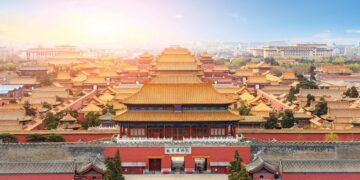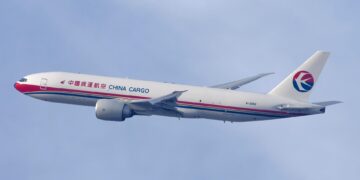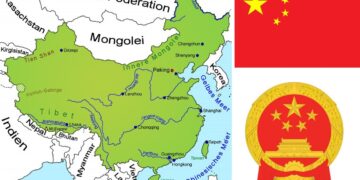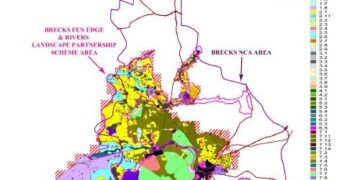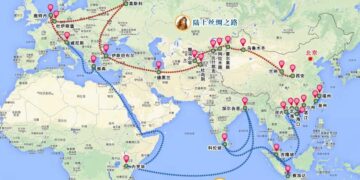As urbanization continues to escalate across the globe, air quality has emerged as a pressing concern, especially in rapidly developing regions.The Beijing-tianjin-Hebei area of China stands as a prime example, where the interplay of industrialization, population density, and climatic conditions has led to significant environmental challenges. Among thes, summer ozone (O3) pollution poses a critical threat to public health and ecological stability.This article delves into the complex characteristics of the summer O3 pollution cycle within this central city, offering a detailed analysis of volatile organic compounds (VOCs) sources that contribute to the formation and exacerbation of ozone levels. By examining seasonal trends and pollution dynamics,we aim to provide insights that can inform local policy and bolster efforts toward cleaner air initiatives,while raising awareness of the broader implications for urban sustainability in one of China’s most populous regions.
key Characteristics of Summer O3 Pollution Cycles in the Beijing-Tianjin-Hebei Region
In the Beijing-Tianjin-Hebei region, summer O3 pollution cycles exhibit distinct diurnal and seasonal patterns influenced by a complex interplay of meteorological conditions and anthropogenic activities. Typically, O3 concentrations rise during the daytime, correlating with elevated solar radiation and temperature, which enhance photochemical reactions leading to ozone formation. The chemical precursors to O3, mainly nitrogen oxides (nox) and volatile organic compounds (VOCs), are extensively emitted from vehicles, industrial activities, and other combustion processes, peaking during the morning rush hours and fluctuating throughout the day.
Key factors driving the variation in O3 levels include:
- Temperature: Higher ambient temperatures during summer foster enhanced O3 formation.
- Wind Patterns: Wind direction influences the transport of polluted air masses, affecting local O3 accumulation.
- urban Heat Island Effect: Dense urbanizations contribute to localized warming, further intensifying O3 levels.
The synthesis of O3 can be directly related to specific VOC sources within the region.Recognizing these sources is crucial for developing effective mitigation strategies. The following table highlights the primary VOC contributors and their potential impact on O3 levels:
| Source | Contribution to O3 Formation |
|---|---|
| Vehicle Emissions | Major contributor due to high NOx and VOC release during operations. |
| Industrial Discharges | Industries release a variety of VOCs,significantly impacting O3 pollution. |
| Solvent Use | Common in urban settings, contributing to elevated VOC levels. |
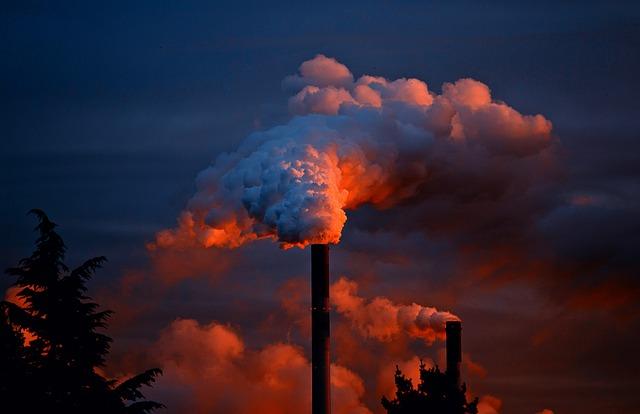
Identifying Volatile Organic Compounds Sources Contributing to O3 Formation
The identification of volatile organic compounds (vocs) that contribute to ozone (O3) formation is crucial for understanding and managing air quality in urban environments. In the Beijing-Tianjin-Hebei area, several key sources have been identified. These sources include:
- Vehicle emissions: Traffic congestion heavily influences local air quality, with cars and trucks being major contributors of VOCs.
- Industrial activities: Factories release a variety of VOCs during manufacturing processes, significantly amplifying the potential for ozone formation.
- Solvent use: Everyday products such as paints, cleaners, and pesticides emit VOCs, which further complicates the atmospheric chemistry.
To effectively mitigate ozone pollution, it is indeed essential to develop strategies targeting these sources. The following table outlines the estimated contributions of various VOC sources to O3 formation in the region:
| Source | Percentage Contribution (%) |
|---|---|
| Vehicle Emissions | 40 |
| Industrial Discharges | 35 |
| Solvent Use | 15 |
| Biogenic Sources | 10 |
By examining these figures, stakeholders can prioritize interventions that focus on the highest contributing sectors. A comprehensive approach, involving both regulatory measures and public awareness campaigns, can lead to significant reductions in ozone levels and improve the overall air quality in the urban centers of this region.

Impact of Meteorological conditions on O3 Levels in Central Beijing
The complex interplay between meteorological conditions and ozone (O3) levels in Central Beijing significantly influences air quality. High temperatures, low humidity, and stagnant atmospheric conditions create an environment conducive to elevated O3 concentrations. During the summer months, the combination of intense solar radiation and photochemical reactions involving volatile organic compounds (VOCs) leads to the rapid formation of ozone. Furthermore,wind patterns can either disperse or concentrate pollutants,exacerbating or alleviating O3 levels across the region.
Key meteorological parameters impacting O3 levels include:
- temperature: Increased temperatures enhance the photochemical processes that produce O3.
- Humidity: Lower humidity levels correspond with higher O3 concentrations, while high humidity can facilitate the scavenging of ozone precursors.
- Stability of the Atmosphere: Stable weather conditions impede vertical mixing, trapping pollutants near the surface.
- Wind Speed and Direction: Influences the dispersal of emissions and the transport of background O3 from surrounding regions.
| Meteorological Factor | Effect on O3 Levels |
|---|---|
| Temperature | Higher temperatures lead to increased O3 formation. |
| Humidity | Lower humidity enhances O3 persistence. |
| Wind Conditions | variable; can either increase dispersion or concentration of pollutants. |
Understanding how these meteorological parameters interact with various VOC sources is critical for developing effective air quality management strategies. In urban environments like Beijing,where industrial emissions,vehicular exhaust,and even natural sources contribute to O3 precursor levels,the role of weather becomes even more pronounced.Policymakers and environmental agencies can leverage this knowledge to forecast pollution swings and implement timely interventions to protect public health.

Strategies for Mitigating O3 Pollution in Urban Environments
Urban areas like the Beijing-Tianjin-Hebei region face significant challenges in managing ozone (O3) pollution, especially during the summer months when photochemical reactions are at their peak. Effective strategies to mitigate this pollution must focus on reducing precursor emissions, particularly volatile organic compounds (VOCs) and nitrogen oxides (nox). Urban planners and policymakers can consider a variety of approaches, including:
- Enhancing Public Transit: improving the efficiency and accessibility of public transportation can reduce the number of vehicles on the road, thereby decreasing emissions from mobile sources.
- Regulating Industrial Emissions: Implementing stricter regulations on industries responsible for high VOC emissions can lead to significant reductions in ground-level ozone formation.
- Promoting Green Infrastructure: Increasing urban green spaces can help absorb CO2 and other pollutants, contributing to overall air quality betterment and serving as a natural buffer against O3 formation.
- Public Awareness Campaigns: Educating citizens about the sources and impacts of ozone pollution, and encouraging actions such as carpooling or using non-motorized transport can have a cumulative positive effect on air quality.
In addition to these measures, collaboration among government agencies, industries, and local communities is crucial for developing a comprehensive air quality management plan. Monitoring and data collection on air quality can help identify pollution hotspots and the effectiveness of mitigation strategies.An example of integrated responses coudl involve:
| Strategy | Expected Outcome |
|---|---|
| Emission Control Technologies | Reduction in VOC and NOx emissions from industrial sources |
| Urban Planning Policies | Lower traffic congestion and enhanced air circulation |
| Community Engagement Programs | Increased public participation in air quality initiatives |
| Real-Time Pollution Alerts | Less exposure to high O3 levels during peak pollution hours |

Policy Recommendations for Air Quality Management in the Beijing-Tianjin-Hebei Area
To effectively manage air quality in the Beijing-Tianjin-Hebei area, it is crucial to implement a range of targeted policy recommendations based on the unique characteristics of ozone (O3) pollution and volatile organic compounds (VOCs) sources identified in summer months. Enhanced monitoring systems should be established to provide real-time data on O3 levels and VOC emissions. By utilizing advanced satellite tracking technology and ground-based sensors, authorities can better understand pollution patterns and respond proactively. Additionally, it is indeed essential to promote public awareness campaigns highlighting the sources of vocs and their impact on air quality, encouraging community involvement in reduction efforts.
Moreover, governments should prioritize stricter regulations on industrial emissions, particularly focusing on sectors identified as high contributors to VOCs. implementing incentives for industries to adopt cleaner technologies can foster a shift towards greener operations. Transportation management initiatives,including the promotion of electric vehicles and improved public transit systems,could significantly lower vehicular emissions that contribute to O3 formation. furthermore,collaboration with neighboring regions is vital for creating a coordinated response to transboundary pollution,ensuring a comprehensive approach to air quality management across the entire area.

Future research Directions on Air Quality and O3 Dynamics in Mega-cities
To advance our understanding of air quality and ozone (O3) dynamics in mega-cities, it is crucial to enhance research methodologies that evaluate the complex interactions between atmospheric components. Future studies should focus on integrating advanced satellite remote sensing technologies with ground-based observations. This dual approach will enable researchers to:
- Identify localized pollution sources through high-resolution spatial data.
- Monitor temporal variations in O3 and volatile organic compounds (VOCs) concentrations.
- utilize machine learning algorithms to predict pollution trends based on ancient data.
Moreover, understanding the role of meteorological factors in shaping pollutant dispersion is essential. Investigating the effects of urban heat islands and prevailing wind patterns can uncover the mechanisms behind O3 accumulation. Future investigations should consider:
- Longitudinal studies that correlate weather data with pollution metrics over extended periods.
- Participatory research that engages local communities in data collection efforts.
- Interdisciplinary collaborations that bridge environmental science, urban planning, and public health sectors.
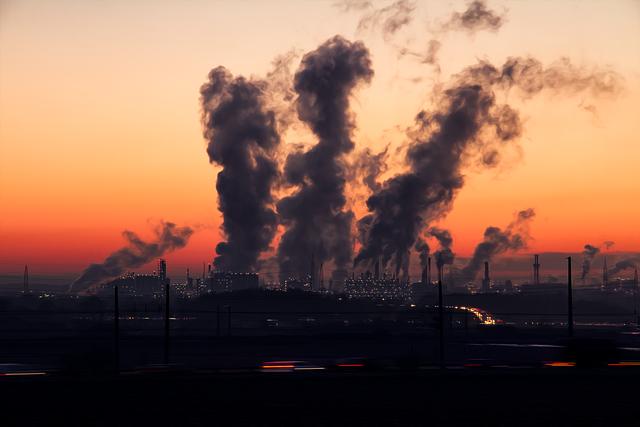
Closing Remarks
the study of Summer O3 pollution cycles and volatile organic compounds (VOCs) sources in the central city of the Beijing-Tianjin-Hebei area reveals critical insights into the environmental challenges faced by one of China’s most densely populated regions. The intricate relationship between O3 levels and VOC emissions emphasizes the need for targeted policies aimed at curbing air pollution and improving public health. As urbanization continues to intensify, understanding the local sources of pollution becomes increasingly significant for developing effective mitigation strategies. This research not only contributes to our understanding of the atmospheric dynamics in this key economic zone but also underscores the urgency for collaborative efforts among policymakers, industries, and communities to foster a sustainable urban environment.By addressing the underlying pollutants and their sources,there is potential to enhance air quality and protect the health of millions living in this vibrant yet vulnerable region.


